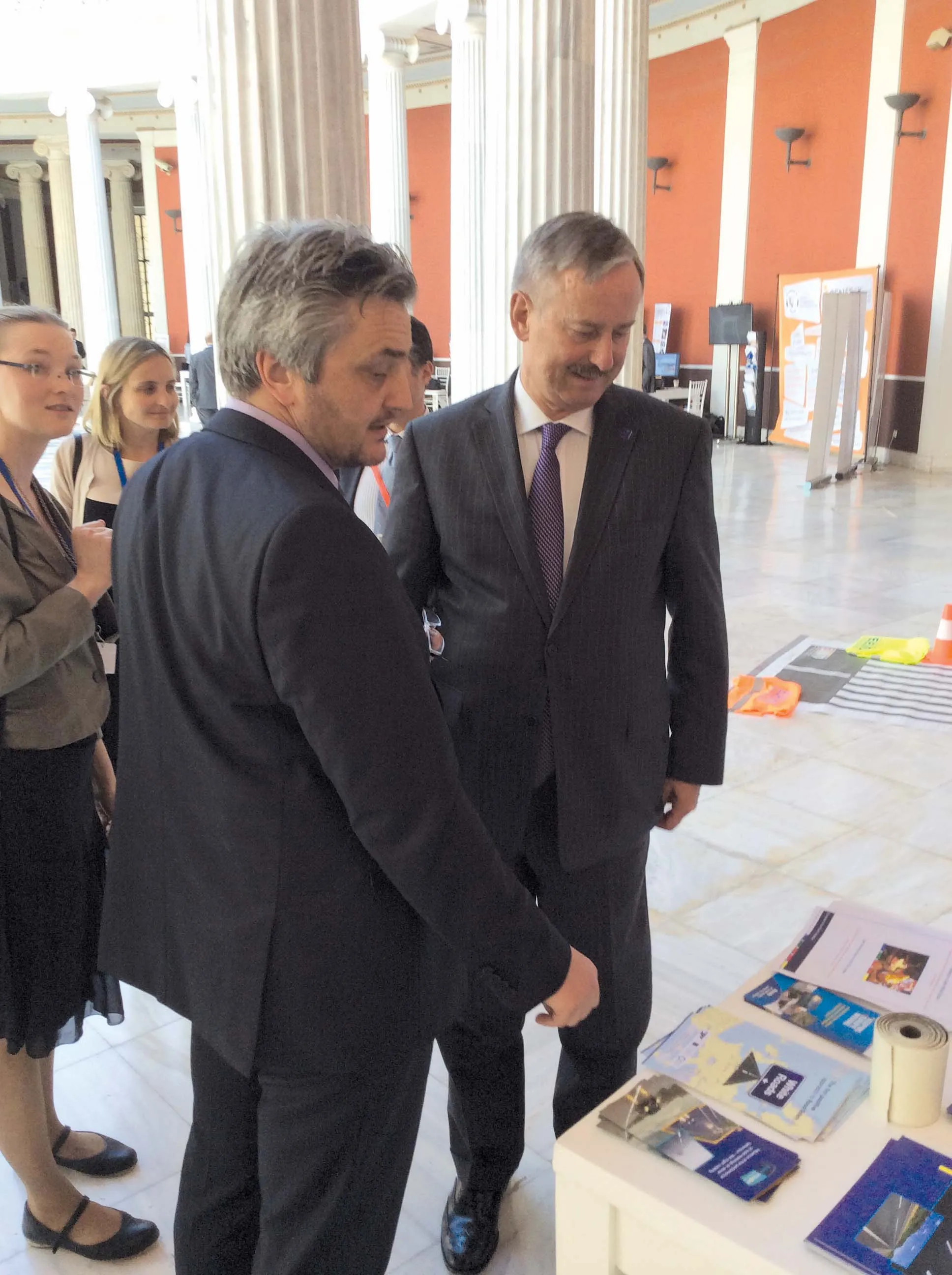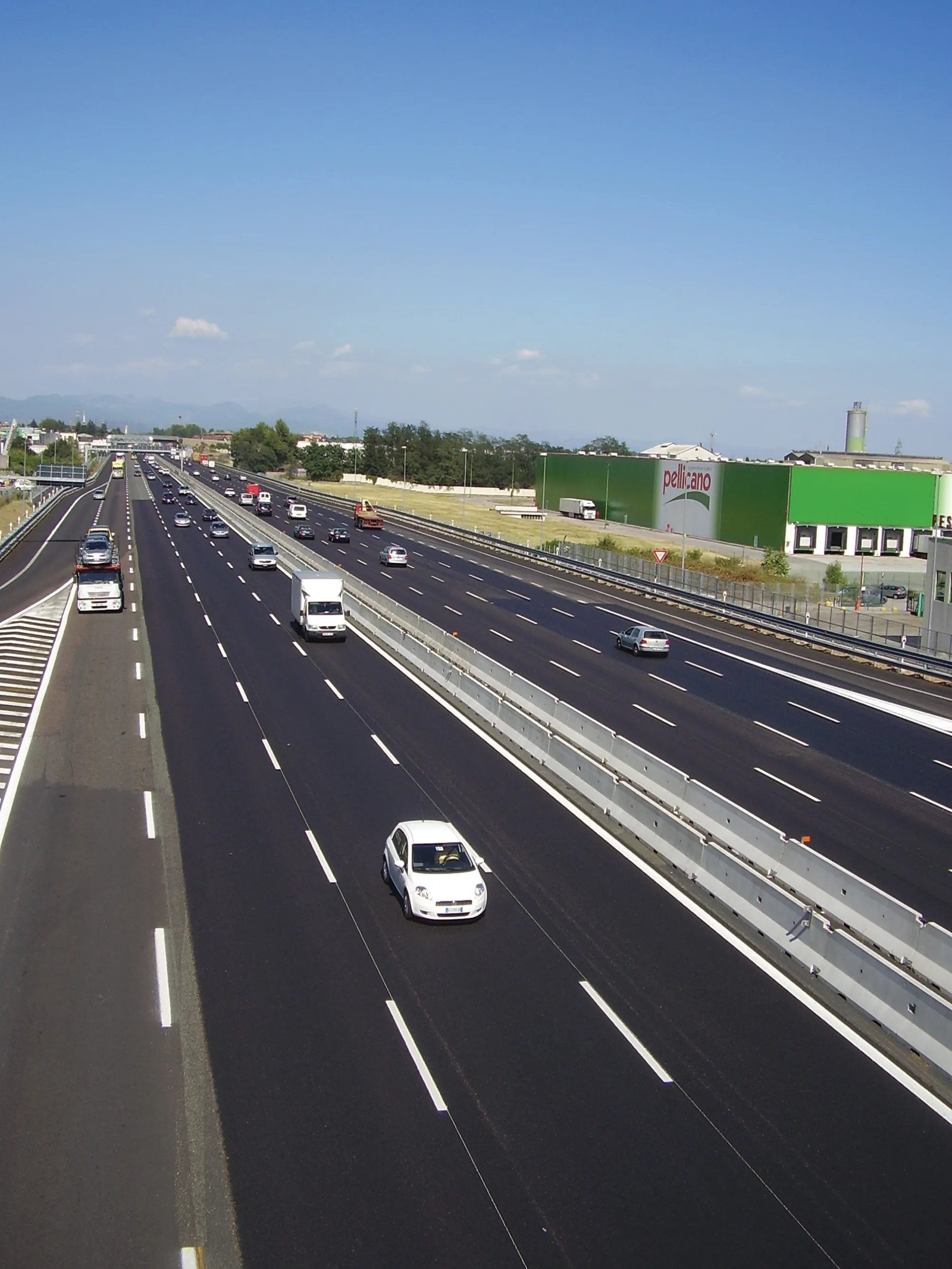The European Union Road Federation (ERF) was in Athens, Greece on May 8-9 2014 to take part in in the Informal EU Transport Ministers Council meeting and the European Commission organised 6th European Road Safety Day event. The European Road Safety Day event held at the Zappeio Megaro on 9 May 2014 under the heading ‘Safe and Smart Infrastructure’ was organised in cooperation with the Greek Presidency to coincide with the informal Council of Transport Ministers, also held at Zappeio Megaro the day before.
June 30, 2014
Read time: 3 mins

The 2866 European Union Road Federation (ERF) was in Athens, Greece on May 8-9 2014 to take part in the Informal EU Transport Ministers Council meeting and the European Commission-organised 6th European Road Safety Day event
The European Road Safety Day event held at the Zappeio Megaro on 9 May 2014 under the heading ‘Safe and Smart Infrastructure’ was organised in cooperation with the Greek Presidency to coincide with the Informal Council of Transport Ministers, also held at Zappeio Megaro the day before.
From its stand at the Informal3287 EU Transport Ministers Council meeting event, the ERF had the opportunity to explain to high-level decision-makers how quality road infrastructure can improve road safety, and, in particular, how cost-effective solutions that are available today (e.g. traffic signs, road markings and road barriers) can generate significant safety and financial gains for authorities. In addition to a number of Council and Commission officials, the stand was visited by Siim Kallas, Vice President of the 2465 European Commission and Commissioner for Transport and Michalis Papadopoulos, Greek Deputy Minister for Infrastructure, Transport and Networks.
On the 9 May at the European Road Safety Day event, and in addition to having an exhibition stand, the ERF, assisted by152 3M, set up a night-time demo of road infrastructure technologies. A tent was set up in the pavilion of the venue where visitors could test in a dark environment how different technologies can impact conspicuity.
Visitors had the opportunity to check how different prismatic materials for traffic signs, according to EN 12966, can affect driver conspicuity and especially the important gains that can be achieved by implementing Class 3 sheeting (high retro-reflection) as opposed to Class 2 (medium highly retro-reflection) and Class 1 (low retro-reflection).
With respect to road markings, visitors were shown the difference between standard technology road markings, which cannot reflect light back under rain, and Type II markings, which are capable of reflecting light under all weather conditions, especially in wet and rainy conditions during night-time.
To scientifically demonstrate the safety benefits of Type II markings, the ERF, in cooperation with four more partners, is currently carrying out the RAINVISION project, studying the influence of road markings on driver behaviour by mainly analysing how different age groups (young vs middle vs old) and different gender groups (male vs female) adapt their driving behaviour on the basis of the visibility and retroflectivity of road markings under all weather conditions (dry, wet, wet and rainy) during night-time driving.
The basic questions that will be addressed by the RAINVISION project are: Does better visibility of pavement markings during wet and rainy nights contribute to better driving comfort and road safety? How does the impact of increased visibility vary according to age? Other things being equal, do men and women show different reactions?
The final RAINVISION project test results will be transposed into a series of recommendations that will be widely distributed to stakeholders involved in road safety.
“It is crucial to translate road safety into some minimum requirement when it comes to deploying infrastructure solutions and this is one of the messages we were trying to push through with our demo in Athens,” explains Konstandinos Diamandouros, Head of Office at the ERF. “The current Directive on Infrastructure Safety Management, while providing a valuable framework for road authorities, has refrained to date from specifying any minimum performance requirements when it comes to the solutions deployed on the road. This is something we will be pushing for when the Revision of the current Directive comes up for revision in the coming months.”
The European Road Safety Day event held at the Zappeio Megaro on 9 May 2014 under the heading ‘Safe and Smart Infrastructure’ was organised in cooperation with the Greek Presidency to coincide with the Informal Council of Transport Ministers, also held at Zappeio Megaro the day before.
From its stand at the Informal
On the 9 May at the European Road Safety Day event, and in addition to having an exhibition stand, the ERF, assisted by
Visitors had the opportunity to check how different prismatic materials for traffic signs, according to EN 12966, can affect driver conspicuity and especially the important gains that can be achieved by implementing Class 3 sheeting (high retro-reflection) as opposed to Class 2 (medium highly retro-reflection) and Class 1 (low retro-reflection).
With respect to road markings, visitors were shown the difference between standard technology road markings, which cannot reflect light back under rain, and Type II markings, which are capable of reflecting light under all weather conditions, especially in wet and rainy conditions during night-time.
To scientifically demonstrate the safety benefits of Type II markings, the ERF, in cooperation with four more partners, is currently carrying out the RAINVISION project, studying the influence of road markings on driver behaviour by mainly analysing how different age groups (young vs middle vs old) and different gender groups (male vs female) adapt their driving behaviour on the basis of the visibility and retroflectivity of road markings under all weather conditions (dry, wet, wet and rainy) during night-time driving.
The basic questions that will be addressed by the RAINVISION project are: Does better visibility of pavement markings during wet and rainy nights contribute to better driving comfort and road safety? How does the impact of increased visibility vary according to age? Other things being equal, do men and women show different reactions?
The final RAINVISION project test results will be transposed into a series of recommendations that will be widely distributed to stakeholders involved in road safety.
“It is crucial to translate road safety into some minimum requirement when it comes to deploying infrastructure solutions and this is one of the messages we were trying to push through with our demo in Athens,” explains Konstandinos Diamandouros, Head of Office at the ERF. “The current Directive on Infrastructure Safety Management, while providing a valuable framework for road authorities, has refrained to date from specifying any minimum performance requirements when it comes to the solutions deployed on the road. This is something we will be pushing for when the Revision of the current Directive comes up for revision in the coming months.”








